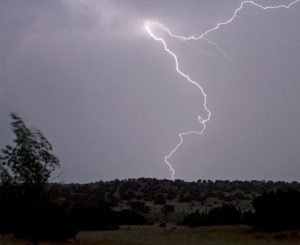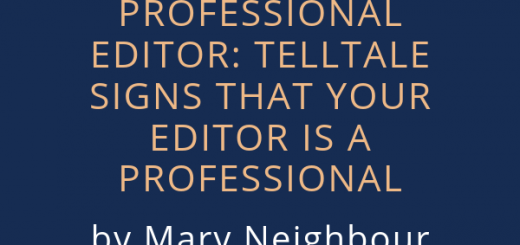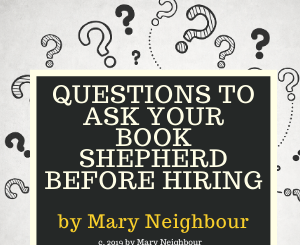Publishing Terms You’ll Want to Know: How to Spot a Professional Book Shepherd by Mary Neighbour
 Please welcome back guest author Mary Neighbour as she shares with us “Publishing Terms You’ll Want to Know: How to Spot a Professional Book Shepherd.” Enjoy!
Please welcome back guest author Mary Neighbour as she shares with us “Publishing Terms You’ll Want to Know: How to Spot a Professional Book Shepherd.” Enjoy!
***
For terminology pertaining to editing and design, please review the previous blog posts here.
 In this blog post, our glossary offers terms more generally related to the publishing process.
In this blog post, our glossary offers terms more generally related to the publishing process.
Each sheds light on an aspect of the industry that you’ll likely discuss with a book shepherd.
Publishing Terms You’ll Want to Know
ARC: Advance Reading Copy, which may or may not be proofed or balanced. ARCs are sent to reviewers in advance of publication in order to get favorable reviews and endorsements that can be printed on the cover or interior of the book at the time of publication.
Author/book platforms: These refer to resources the author contributes to the efforts of marketing and promotion, such as:
- Website
- Email list
- Social media presence
- Joint venture partners
- Speaking and presentation opportunities
Binding: The way pages in a book are held together and encased (by the cover). A variety of methods exist, including:
- Perfect bound, using an adhesive
- Saddle stitched (which actually is stapled)
- Sewn, whereby “signatures” (groups of pages) are sewn with thread
- Spiral- and wire-bound
Tip: Joel Friedlander, “the Book Designer,” has a good, basic article on types of binding.
BISAC: An acronym for Book Industry Standards and Communications, a group that publishes subject codes (descriptions and categories), among other things, for use in the book trade. BISAC codes are an important part of a book’s metadata (see below).
Blurbs, endorsements, and reviews:
- A blurb is short, descriptive promotional copy that is printed on or about a book, intended to entice readers to buy the book.
- An endorsement is praise about the author or the book from a prominent person or industry publication.
- A book review can be from readers or publishing professionals. It is generally lengthier than a blurb, and an excerpt from a noteworthy source may be printed on and/or in the book.
Examples: A marketing expert writes copy for the blurbs on back covers; Oprah endorses books; Publishers Weekly reviews them.
Book shepherd: A consultant or company who guides authors through the publishing process; also called book doctors, gurus, and many other such names, all of which refer to an expert in the entire process of self-publishing.
Domain: Not to be confused with an actual website, the domain is the name and address (URL) of a website.
Cataloging: A way of categorizing your book, employed by libraries and booksellers for shelving your book and making it discoverable within a subject area. Consistent metadata (see below) is essential to avoid confusion in the marketplace.
Copyright: Copyright law ensures an author’s right to own, use, and sell the works they create. A standard “copyright notice” is:
© 2019 by Author Name. All rights reserved.
CreateSpace: See KDP.
Disclaimer: A statement usually printed on or near the copyright page, which denies something (typically a responsibility or liability).
Discount: A trade discount refers to a percentage of the sales price that the publisher concedes to a bookseller.
Discovery: Merely publishing and distributing your book does not ensure it will be discovered by readers—only strategic marketing efforts will do that.
 Recommended: If you desire sales beyond just family and friends, give your book the marketing attention it deserves. Help it to soar.
Recommended: If you desire sales beyond just family and friends, give your book the marketing attention it deserves. Help it to soar.
Distribution: Before the digital age, distribution referred to companies in the publishing industry who marketed, sold, and fulfilled book orders. Now we also have digital distribution, which entails market access to print books, ebooks, and audiobooks. Self-publishers who only represent their own books usually do not qualify for conventional distribution, so digital channels for wholesale and retail outlets are essential.
Duplex printing: Refers to the mechanical ability to print on both sides of a sheet of paper. However, it is not usually mentioned in relation to book interiors—only to book covers, where printing on both sides of the cover is less common.
Ebook: This is an electronic version of a book, which is read on a device like a computer screen or e-reader.
Expanded distribution: This term, as used by Amazon, CreateSpace, and KDP, pertains to making your books available through more channels than just the Amazon-owned channels. It includes libraries, booksellers, distributors, and non-US markets.
Tip: These non-Amazon channels are mostly owned and operated by Ingram Content Group. If a self-publisher is making their book available through both Amazon and Ingram, the “Expanded Distribution” in Amazon should not be selected.
Front and back (end) matter: Anything that precedes or follows the main text of a book. Material on front matter pages conventionally is numbered using roman numerals. Elements of front and back matter may include:
| Front | Back |
| Title page(s) | Afterword |
| Copyright page | Glossary |
| Table of contents | Index |
| Forewords, prefaces, and introductions | About the author |
Tip: A sure sign of an unprofessional book is the misplacement or incorrect numbering of front and back matter.
Fulfillment: Refers to the warehousing and/or delivery of books to sellers.
Genre: Simply, the type of book your content reflects. Two main categories are fiction and nonfiction; numerous subcategories exist under each.
Identifiers: A unique set of numbers (in most instances) to distinguish your book from others. Four commonly used identifiers are:
- ISBN: International Standard Book Number, a ten- or thirteen-digit number
- LCCN: The Library of Congress Control Number is a detailed bibliographic record
- EAN: The European Article Number, typically seen printed at the bottom of bar codes or package labeling
- ASIN: Amazon Standard Identification Number
Imprint: A trade name used by a publishing company to brand its books.
IngramSpark: A subsidiary company of Ingram Content Group, typically referred to as an online publishing platform, which provides resources to authors for printing and publishing their paperbacks, hardbacks, and ebooks.
KDP: An Amazon subsidiary, Kindle Direct Publishing is an online publishing platform, which provides resources to authors for printing and publishing their books and ebooks. Prior to mid-2018 (when Amazon phased out CreateSpace), KDP only published ebooks, but now they also print and publish paperbacks (not hardbacks).
Launch: Generally referring to the activities entailed in making a book public for the first time, there are various types of efforts: soft or hard, public or private, pre- and post-publication, among others. Which activities you choose for your book launch should be strategically planned to suit your book, its genre, and its readership.
Logo: Simply, a pictograph, usually represented through the graphical design of image and/or text. The logo of a publishing company or imprint is considered an indicator of professionalism; these typically appear on a book’s title page, spine, and cover.
Metadata: Descriptive terminology used for the purpose of book discovery and identification. It encompasses keywords, categories, title, author name, ISBN, and many other book details.
Recommended: Ensure that all the applications of your metadata are consistent. Otherwise, you risk confusing the marketplace and making it more difficult for your book to be found by sellers and readers.
A common error: Using or not using a middle initial in various instances of stating the author’s name.
 Permissions: Whenever you do not own the copyright to material you wish to use in your book, you need permission from the copyright holder to include it. This is an official authorization, given in writing, granting you permission for the use you seek. Many permissions will require you to pay a fee for use of the material. Placing song lyrics in a book is a frequent occurrence requiring permission. Failure to obtain permission to use copyrighted material is akin to inviting a lightning strike.
Permissions: Whenever you do not own the copyright to material you wish to use in your book, you need permission from the copyright holder to include it. This is an official authorization, given in writing, granting you permission for the use you seek. Many permissions will require you to pay a fee for use of the material. Placing song lyrics in a book is a frequent occurrence requiring permission. Failure to obtain permission to use copyrighted material is akin to inviting a lightning strike.
PCIP: Based on the Library of Congress CIP (Cataloging in Publication) system, the PCIP (Publisher’s Cataloging-in-Publication) is a cataloging variation for self-publishers, who are not eligible for CIP. PCIP data in a self-published book is attractive to libraries, as it helps them catalog a book.
Printing: Though there are more than two methods of printing, a basic breakdown is between offset and POD printing.
- Offset: Refers to the use of an image being transferred to paper from a rubber-covered cylinder. The machinery for this is more often used in the commercial sector rather than the self-publishing sector.
- POD (print-on-demand): Though not synonymous with “digital printing,” POD is a digital method that allows a book to be printed in its entirety in one run, rather than in sections that later will be assembled. POD has become popular in self-publishing.
Tip: Read a more detailed article on methods of printing by Joel Friedlander, “the Book Designer.”
Proofs: Copies, whether printed or digital, used for proofreading and making corrections to text, artwork, or manufacture.
Publishing: Producing and issuing a book for general consumption.
Publication date: Basically, this is the date when a book is manufactured and can be shipped. But the process of making a book available for sale is varied and complex. Here are some other types of publishing dates:
- Release date
- Pre-sale date
- On-sale date
- Laydown date
- Street date
Tip: Don’t get too hung up on a single term, as these all are used interchangeably—and sometimes incorrectly. Authors need to understand how their books will be distributed to chain and independent booksellers, and then determine a sales strategy accordingly.
Reader persona: Also called an avatar, this is a biographical sketch of a typical reader or buyer. Developing reader personas is a tool for shaping other marketing content. Many books will have more than one typical reader, and a persona should be developed for each type.
Rights: Refers to the legal interest possessed by an owner of the right. Authors commonly hold copyright, serial rights, foreign rights, etc.
Royalty: Usually based upon the sales price of the book, the royalty is the amount received by the author after a publisher or bookseller takes its share.
Recommended: Both IngramSpark and KDP offer free, online royalty calculators, whereby you can enter various price points, trim sizes, page counts, and other book details to determine the royalty for your book. Self-publishers often find these calculators helpful in establishing the prices of their books.
Self-publishing: Also called independent publishing, this method refers to authors controlling the entire publishing process, even though many steps can be outsourced to appropriate professionals. (See also “Traditional publishing” and “Vanity publishing.”)
Trade book: Any book intended for general readership.
Traditional publishing: In current usage, this term refers to books published through a conventional publishing house, whether large or small, where the publisher does not charge authors any fees; they obtain their profits from the sales of the book.
Upload: The process of transferring a digital file of a book (or related data) to an online platform, for the purpose of viewing, sharing, or printing.
 Vanity publishing: Also called subsidy publishing, this method of publishing requires authors to pay the publisher in order to have their book published. Authors are usually warned to beware of these types of relationships.
Vanity publishing: Also called subsidy publishing, this method of publishing requires authors to pay the publisher in order to have their book published. Authors are usually warned to beware of these types of relationships.
Publishing Industry Terms
The breadth of publishing industry lingo points to reasons why you want to hire a book shepherd who understands the scope of the panorama before you.
Confusion about or divergence from the norms can lead to serious trouble for your book, especially in regards to making it available to the public.
Be sure to read all the blog posts in this series to gain a comprehensive understanding of the self-publishing journey.
Next week in this series: “Telltale Signs Your Book Shepherd Is Professional.”
The following week: “Questions to Ask Your Book Shepherd Before Hiring.”
***
ABOUT THE AUTHOR
 Some call Mary E. Neighbour a “book shepherd,” though Mary wields a blue pencil far more expertly than a herding rod. For the past ten years, she and her husband have helped dozens of writers bring their manuscripts to the marketplace, through MediaNeighbours, their publishing services business.
Some call Mary E. Neighbour a “book shepherd,” though Mary wields a blue pencil far more expertly than a herding rod. For the past ten years, she and her husband have helped dozens of writers bring their manuscripts to the marketplace, through MediaNeighbours, their publishing services business.
Passionate about helping authors make their work shine in the world, with a combined professional expertise of over 50 years in editing and design, this family team is one you’ll want to adopt as your guide through the challenging world of independent publishing.
Mary’s other passion is learning about the history of slavery and how it impacts race relations today. She incorporated much of her research into her novel, Speak Right On: Conjuring the Slave Narrative of Dred Scott






